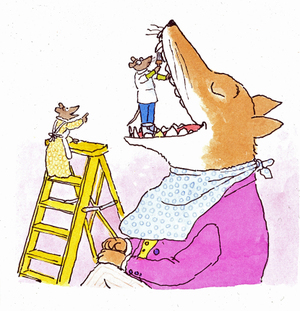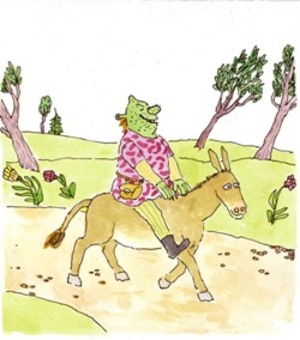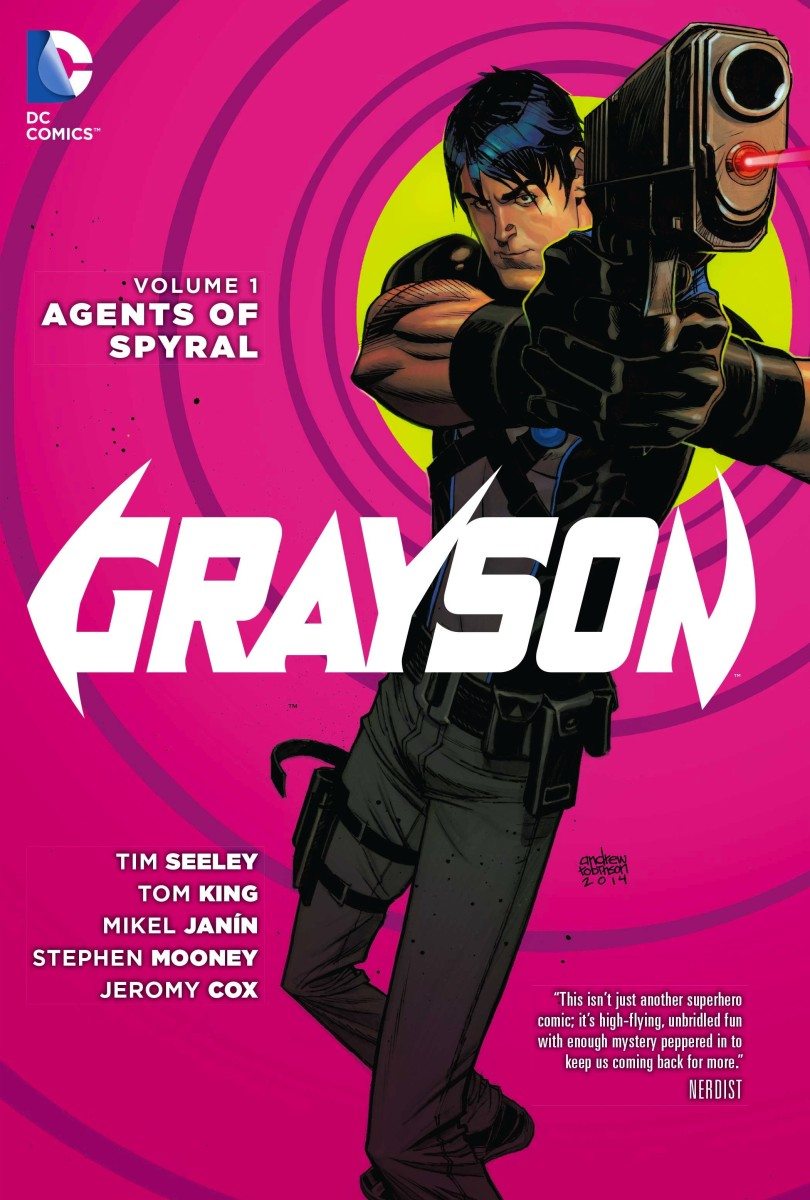

Some really great animated movies – and some incredibly lousy ones – have been made from children’s picture books. Surprisingly, many of the best adaptations, the ones that are most true to the books themselves, evolved out of a primitive medium known as the film strip. If you are of a certain age, you may remember sitting in kindergarten listening to a recording of someone reading an award-winning book such as Make
Way for Ducklings while watching synchronized illustrations projected on a screen. Eventually these gave way to movies in which the camera zoomed and panned around the illustrated page, and from there the leap was made to full animation.
Right around the time my kids came along, the company that made these filmstrips and movies, Weston Woods (now part of Scholastic), released several collections of them on video. We bought quite a few and borrowed even more from the library. I got to watch old favorites and discover other children’s classics that I had never seen before. They were quiet, and literate, and in many ways the antidote to more hyper children’s films.
But there was another reason I loved them. In the mid-80s
I had the privilege of working on some of them. Operating out of a nondescript office in mid-town Manhattan, independent animator Michael Sporn hired me as an
“in-betweener,” doing drawings that made the extreme poses flow smoothly. The project was Doctor De Soto, a book by New Yorker cartoonist William Steig.
Steig’s books are offbeat enough that they will not appeal to every child or adult; the first time I saw his work was on a mural of Sylvester and the Magic Pebble a friend was painting for her daughter’s nursery. I didn’t get it. But the Doctor De Soto characters – a mouse and his wife whose dental office is visited by a fox – and watercolor backgrounds were so charming, I was won over.
What I particularly liked was how Sporn managed to maintain the illusion that the watercolor illustrations were moving.
Traditional big studio hand-drawn animation did use watercolor backgrounds, but the characters would be painted in solid colors on celluloid, giving them a shiny, hard appearance. Sporn had us draw the characters on paper with felt-tip pens (saved time over penciling them in first) and color them in with thick markers. Then they were cut out and glued onto the cels. Others must have liked his technique too, because the short film was nominated for an Academy Award.

 Contrast this loving attention to recreating the original artists’ work with another adaptation of a Steig work – Shrek. Yes, the series of wisecracking 3D computer animated features also got their start in a delicately-drawn Steig picture book. My kids never got caught up in all the
Contrast this loving attention to recreating the original artists’ work with another adaptation of a Steig work – Shrek. Yes, the series of wisecracking 3D computer animated features also got their start in a delicately-drawn Steig picture book. My kids never got caught up in all the
Shrek-mania, thank goodness, because I don’t think I coulda stood it. I remember seeing a short article at the time that made the contrast between
Doctor De Soto and Shrek, and pointed parents back to the earlier film. Sporn himself recently told me in an email, “I have nothing kind to say about SHREK.
When you look at the work of William Steig then turn to the ugly Dreamworks product, one can’t help but be saddened.” 

Sporn went on to animate three other Steig books, The Amazing Bone, Abel’s Island, and Sylvester and the Magic Pebble, as well as works by other authors. One of my favorites is The Man Who Walked Between the Towers, inspired by the true story of aerialist Philippe Petit and his 1974 high wire walk between the twin towers of the World Trade Center. He also designed his own version of Lewis Carroll’s The Hunting of the Snark
(which he got James Earl Jones to narrate for him). He still animates by hand, although he now uses Photoshop to color the drawings and other software to composite and edit.
You can stream many of Sporn’s films for free — as well as other Weston Woods of their picture book adaptations, some animated, some simply scans of the illustrations — at the website of New Hampshire Public
Television.
And if you’re interested in trying out some basic hand-drawn animation techniques with your kids, I’ve just posted instructions for making a flip book (with links to animation books and instructional websites) at the Wired.com How-to Wiki.
Kathy Ceceri is author of Around the World Crafts: Great Activities for Kids who Like History, Math, Art, Science and More!
![Reblog this post [with Zemanta]](http://img.zemanta.com/reblog_e.png?x-id=68e5c43d-6d8b-48f6-8373-a59027798ac4)

